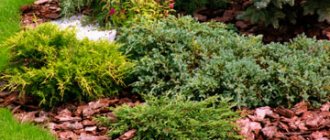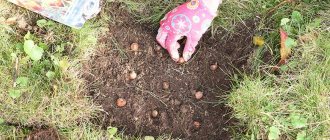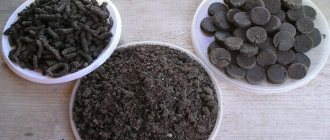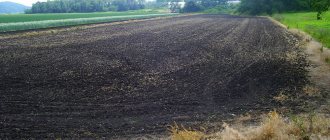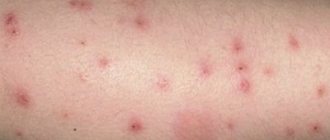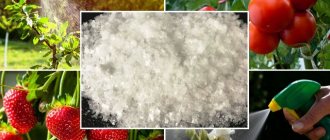Loading…
Loading…
There are a huge number of insects in the world that spoil agricultural crops - Colorado potato beetles, locusts, aphids, and leafhoppers. The measures to combat leafhoppers are unprecedented, because the voracious army is capable of nibbling all the plantings to the roots and leaving us without a harvest.
Until recently, only residents of the southern regions were well acquainted with cicadas. But with the warming of the climate, pests have spread everywhere and are eating plantings throughout central Russia.
Now is the time to find out what harm these inconspicuous insects cause, how to fight cicadas and preserve planted plants.
Is there a difference between cicadas and leafhoppers
Many of us have the most pleasant memories associated with the singing of cicadas - walks on warm summer nights and gatherings by the fire are invariably accompanied by a cozy chirping sound. So are they the worst pests of gardens and vegetable gardens? Let us hasten to assure you: only song cicadas, large insects that live on trees and bushes in hot regions, chirp. They also cause harm, but due to their impressive size they quickly become prey for birds.
Cicadas are much smaller in body size, cannot chirp, and spend all their energy on feeding and reproduction. And they know a lot about it!
The difference between these two families is clearly visible in the photo:
Due to their insignificant size, enormous fertility and quiet lifestyle, cicadas manage to cause many problems to agriculture during their short life.
Prevention
To prevent leafhoppers from multiplying in garden plots, it is necessary to carry out preventive measures:
- remove all plant debris every autumn;
- thin out plants more often to prevent moisture accumulation;
- periodically treat plants with infusions of garlic and tobacco mixed with a solution of laundry soap.
All types of leafhoppers are considered dangerous pests. The fight against them must be carried out systematically, from year to year. This is the only way to get rid of it in the garden.
What harm do cicadas cause?
The mouthparts of these insects are of the sucking type and are adapted for piercing tissue and sucking out juice. Pests live, feed and reproduce on the underside of the leaf, so they go undetected for a long time. The hatched larvae are motionless, but quickly grow and molt. Grown-up individuals are able to jump from one branch to another. If no measures are taken to control leafhoppers, they can overrun the entire garden in a short time and move on.
The salivary secretions of leafhoppers are poisonous to plants. White necrotic spots appear at the puncture site. Over time, they merge, the leaves dry out and fall off.
See what a rose leaf looks like when the rose leafhoppers “dined”:
Instead of lush, bright greenery, whitish drying spots remained. Pink fragments are places where pathogenic fungi develop. Roses with such leaves are not long-term residents; they will suffer for a long time and freeze to death in the first winter.
In addition to drawing out all the juices from plants, leafhoppers spread various infections, the most dangerous of which are viral and tomato stolbur.
Viral diseases are extremely insidious - they are easily disguised as fungal or bacterial damage, but have practically no cure. Bushes infected with mosaic or jaundice viruses are easier to uproot than to cure.
Cicadas on an apple tree, pear tree or berry bushes are a sure sign of the imminent appearance of an incurable infection, after which the vegetation will have to be destroyed.
Tomato stolbur is another extremely dangerous disease caused by nightshade phytoplasma. To date, there is no effective treatment; all procedures boil down to the destruction of diseased bushes. The pathogen remains active in the soil for many years, so you will have to look for another place to plant nightshade crops.
Viral diseases and stolbur of tomatoes can lead to a crop loss of up to 70%. These are huge numbers for modern agriculture. They make us think about serious measures to combat the leafhopper, as the main carrier of pathogenic plant viruses.
Black-spotted leafhopper
It parasitizes herbaceous plants, preferring ethereal ones. Most of all she loves mint, catnip, and sage. In the second phase of its development, it prefers labiate plants. Now distributed almost everywhere.
The insect overwinters in plant debris. Appears in April-May. The butterfly itself is slightly larger than 3 mm in size and is yellow or green in color with black spots. The larvae are yellow-green.
Extent of damage
Particularly harmful are the larvae that suck the juices of mint leaves. As a result, spots appear on the leaves, then they age and fall off.
Pest control measures combine thinning, complete removal of plant debris from the beds in the fall, and spraying with insecticides.
Description of the most dangerous species of leafhoppers
The voracious family includes more than 20 thousand species, but several are considered the most harmful in Russia and the post-Soviet space:
- white;
- rose;
- buffalo;
- green;
- striped;
- Japanese;
- cereal;
- six-point.
Let's get to know them better.
Rosenaya (Edwardsiana Rosae)
Distributed everywhere. It affects roses, rose hips, and many fruit trees. The body length of an adult is less than 5 mm, the color is greenish-yellow. During its life it molts several times, leaving an empty shell on the back of the leaves. An adult insect is mobile and quickly jumps from one tree to another.
In autumn, females lay eggs on the tops of shoots. In mid-spring, larvae emerge from them. Within a month, they reach adult size and begin to actively reproduce. Several generations are replaced during the season.
White (Metcalfa pruinosa Say)
Originally from North America, it is now distributed across all continents. The life cycle is similar to the rose leafhopper. The size of an adult insect ranges from 2 to 7 mm. The color is white, the pest looks as if sprinkled with flour. It is unpretentious in nutrition, does not disdain anything, but prefers grapes. In the southern regions, where sunberry is cultivated everywhere, it has become a real scourge of vineyards.
Females lay up to 90 eggs in cracks in the bark; larvae emerge in late spring. Insects secrete sweet honeydew abundantly, which attracts ants and pathogenic fungi. Measures to combat the white leafhopper are no different from other species and will be described in detail below.
Buffalo (Stictocephala bubalus F.)
It got its name because of the vertical shield in the front of the head, similar to a buffalo's forehead. The body is emerald green, the wings are translucent. Lays eggs in the bark of young wood, sawing through it with the ovipositor. The larvae are gray-green, with spines along the longitudinal line of the body. Each female lays up to 500 eggs per year.
The infestation of trees and grape bushes by the buffalo leafhopper can be identified by brown ring constrictions, which are unusual for healthy plants.
It has been known in Russia since the 50s of the last century. Initially, it fed on the juices of wild trees - ash, willow, poplar. Then I tried and fell in love with young fruit trees with delicate bark and succulent shoots. Damages almost all garden and ornamental trees in the southern regions.
Green (Cicadella viridis)
Adults have a rufous body and turquoise wings with a white edge. Distributed in warm and temperate climates. Loves damp places. Found in swampy areas and low-lying flooded meadows.
The green leafhopper feeds on succulent weeds, legumes, and grapes. Affects apple, pear, cherry, plum, peach, and mulberry trees. Carries pathogenic bacteria that are deadly to grapes.
Striped (psammotettix striatus l.)
The color is gray-brown, with indistinct stripes. Lays 50–200 eggs in the stems of winter cereals. The larvae hatch in the spring and feed on cereal seedlings. Damages oats, rye, rice, millet, and vegetable crops.
The striped leafhopper is a carrier of many viral diseases that cause mosaic and dwarf disease in wheat.
Japanese (Ricania japonica Melichar)
Unlike the others, the Japanese leafhopper looks more like a moth with its wings spread. Homeland - South China and Japan. Color beige-brown, striped. Body length up to 1 cm. One of the most malicious pests of eucalyptus, cherry plum, tea bush, cherry laurel, peach, ivy, grape and apple trees.
Six-spotted (Macrosteles laevis)
Along with the striped six-spotted leafhopper, it attacks cereal crops. The color is greenish-yellow, there are 6 black dots on the head. When laying eggs, the female damages the stem, weakening the plants. Carries viral diseases. During the season, 2–3 generations of insects are replaced.
Many-faced pest
There are many varieties of this pest. There are several hundred species of leafhoppers living in Russia, and all of them are considered pests. Some species, in particular the buffalo and white leafhopper, appeared relatively recently, having been introduced from South America and Europe. Different types of agricultural plants can be inhabited by different types of insects - they have their own food preferences.
Whatever the species of leafhoppers, they cause almost the same harm, feeding on the juices of the plants on which they settle. Main damage to plant crops:
- sucking out juices, which leads to slower development, cessation of development, and death of plant parts;
- transmission of viral diseases;
- damage to shoots during egg laying.
When leafhoppers are discovered, it is necessary to immediately begin to fight them, as otherwise the plants may die.
Measures to combat leafhoppers and prevent their occurrence
Most pests, with the exception of leafhoppers, lay eggs in the bark of trees or on the tops of shoots for the winter. Early spring spraying of the garden with urea and copper sulfate will help destroy them. A strong urea solution literally burns out wintering pest eggs without causing harm to the wood. Copper sulfate prevents the development of fungal diseases that arise due to damage to the bark by insects.
Treatment of the garden with urea and copper sulfate is done before the buds open. If time is lost, you will have to use other measures to combat leafhoppers.
Cereal pests are destroyed by early hoeing of the soil, followed by plowing 2–3 weeks later. Chemical methods are used only on wide-row plantings and severe insect damage.
During the growing season, to rid plants of parasites, the same means are used as for aphids.
Before flowering and after harvesting, if there is a strong infestation, treatments with Biotlin, Tanrek, and Fufanon will help.
Before harvesting produce, preference should be given to more gentle natural-based products - Fitoverm or a solution of gum turpentine. To prepare, take 50 g of solid soap and 1.5–2 liters of turpentine (turpentine oil) into a bucket of water. The mixture is shaken and sprayed on the bushes, trying to get it on the underside of the leaves.
With this treatment, tender young leaves may suffer, but they will definitely grow back, and the tree or bush will be saved from the ever-hungry pest.
For preventive measures to combat leafhoppers, standard agricultural practices are suitable.:
- timely destruction of weeds;
- fairly sparse plantings;
- compliance with crop rotation;
- good plant care and limiting nitrogen fertilizers;
- late autumn plowing with seam overturning;
- purchasing seedlings only from trusted nurseries.
The listed measures will help to seriously limit the population or completely cope with leafhoppers and get a rich and healthy harvest.
Control measures
Chemical and biological agents
Aktara VDG
An enteric-contact insecticide that blocks the nerve receptors of the pest. Used in 2 ways: adding to irrigation water (1 g per 10 liters of water) and spraying plants (3–4 g per 10 liters of water).
Arrivo
Enteric-contact insecticide with long-term protection. For leafhoppers, plants are sprayed with a solution of 2 ml of the drug and 10 liters of water.
Inta-vir
This pyrethroid drug is used no more than 3 times per season and only in dry weather, since it is not resistant to washing off. The spray solution is prepared from 1 tablet and 10 liters of water.
Chemicals
If prevention does not give the expected result, then insecticides cannot be avoided.
Each product is accompanied by instructions for use and dosage when preparing the working solution. However, there are several general rules for treating plants with chemicals:
- The procedure is carried out in calm weather at sunset. in the absence of wind precipitation.
- It is necessary to spray the inner leaf plate, since the young growth of the pest is located in these places.
- The sprayer must have a diffuser type nozzle so that fine irrigation will abundantly and evenly cover the entire area of the plant.
- Prepare the solution only before processing and do not store it “for reserve”.
Personal safety when working with chemicals is strictly necessary. Products commonly used to control cicadas:
- Decis
- Aktara
- Vizcaya
- Calypso
- Proteus and others.
The crops need to be processed twice or thrice, with an interval of 1.5 weeks. Typically, two times is enough to achieve maximum success.
Create your dream garden
Several years ago, a new previously unknown pest appeared in our Kuban. Damages almost all country plants, trees, flowers.
For the first time I saw an adult white leafhopper in a flower bed with rudbeckia. My attention was caught by the small white pimples on the young green stems. It seemed as if someone had deliberately dotted white droplets of paint on all the branches. I touched one and... recoiled in surprise - a white elongated droplet suddenly either jumped or flew, sitting down on a leaf nearby.
But about two weeks before that, I noticed a white fluffy coating on the branches and stems on various plants.
As it turned out, I was faced with a new almost indestructible pest.
New sucking pest White leafhopper (Metcalfa or citrus) Latin name - Metcalfa prunosa Say. native to North America.
The leafhopper is imported mainly with seedlings. According to available data, the pest entered the Krasnodar Territory through the seaports of Novorossiysk and Sochi. The leafhopper was first identified in 2009 in the village. Lazarevskoye, in 2010-2011. outbreaks appeared in the cities of Yeisk, Novorossiysk, village. Ozereevka, Elizavetinskaya and Ivanovskaya villages.
Currently, the species is distributed in Anapa, Novorossiysk, Gelendzhik, Sochi and other cities of the Krasnodar Territory.
In the south of Russia, where it is warm and fairly dry, the so-called “vineyard” climate (Anapo-Taman zone) is favorable for the development of the leafhopper.
In recent years, we have literally been groaning from the dominance of this insect; it is quickly spreading by vehicles along highways and railways.
The white leafhopper feeds on many plants, more than 300 species.
He most prefers various flower crops, many trees: maples, elms, willow, viburnum, clematis, dogwood, hawthorn, as well as privet, rose, acacia, elderberry... among conifers he prefers thuja.
Among field crops, it damages rice, barley, corn, soybeans, wheat, sorghum, carrots, tomatoes, potatoes, peppers, etc.
Infectious diseases of roses
Powdery mildew on a rose
This disease is characterized by the appearance of a whitish coating on the surface of leaves and shoots. It usually appears at temperatures below 18ºC and high humidity. Powdery mildew in the initial stage is characterized by the appearance of small spots, which grow over time and affect the entire flower, disrupting its metabolism. As a result, the garden shrub begins to deform and young shoots die.
Prevention of rose disease is carried out using nettle infusion or horsetail decoction, or the drug phytosporin.
Rust on the rose
It develops due to infection of the above-ground part of the plant by the fungus Phragmidium. The disease of garden roses is manifested by the formation of yellow growths. The shoots begin to twist and crack.
As a preventative measure, it is necessary to prune and thin out dry branches throughout the entire period of active plant growth and spray them with special immunomodulators, Bordeaux mixture 1%, and Topaz and Falcon preparations.
Necrosis of rose bark
This group of diseases is usually caused by fungi. In very rare cases - bacteria. It is characterized by damage to the cambium and bark.
Roses that are kept in constant moisture conditions are susceptible to marsupial fungus. On the affected plant, the shoots become covered with brown and then brown spots with a reddish edge. After which shallow ulcers begin to form on the bark. Then brownish growths form in their place and the affected areas dry out.
- Common cancer.
- Diplodia necrosis of the cortex.
- Tubercular death of the cortex.
- Diaport cancer of the stem part of the plant.
- Drying of branches (cytosporosis).
Absolutely all varieties of roses are susceptible to these diseases. All affected areas of the plant must be cut off and burned.
Gray rot on a rose
The disease is caused by the fungus Botrytis cinerea. The debut of the pathological process occurs in the winter. Brownish depressions appear on the stems of the rose, from which gray and fluffy mycelium then grows. Then in its place black growths with spores form. It is also possible for gray mold to appear in the summer due to high rainfall. If roses are not treated for diseases, the plant becomes completely covered with a gray coating and rots.
Black spot of roses
This is a fungal disease that appears as black-brown spots on the leaves of roses. Typically, signs of the disease become noticeable in the second half of summer. Dark brown radiant spots of different sizes form on the leaves, petioles and stipules. With severe infection, the entire leaf darkens, the leaves dry out and fall off. Mycelium and spores overwinter on shoots and leaves.
Measures to combat rose black spot
Collecting and burning diseased leaves, pruning and burning diseased shoots, digging up the soil with rotation of the layer, autumn or early spring spraying of roses and soil before buds open with one of the approved preparations.
Chlorosis of roses
Manifests itself in whitening or yellowing of leaves. The main reasons are a lack of iron, manganese, zinc, magnesium, boron and other elements in the soil. For example, with a lack of iron (usually on carbonate soils), the so-called calcareous form of chlorosis develops. In this case, the chlorotic color spreads over almost the entire leaf, except for the veins. The youngest leaves, the apical ones, are affected first. As the disease progresses, small veins also become discolored. The leaf becomes almost white or white with a cream tint. Subsequently, its tissues die and the leaf falls off.
With a lack of zinc, chlorosis spreads along the entire edge of the leaf and to the tissue between the large lateral veins. Along the central and lateral veins, the leaf retains a green color. At the base of the veins, the green areas of the leaf are wider. With a lack of magnesium, the lower leaves turn yellow and die, the veins remain green, and the edges of the leaves curl. A lack of boron manifests itself in the light color of young leaves; they become thickened and brittle. Young growing parts become sick, the ends of the shoots (growth points) die. Even with a slight excess of alkali, rose leaves begin to become chlorotic, especially in late autumn and winter.
Measures to combat rose chlorosis
The cause of the disease is determined by analyzing the soil or plant. Salts of appropriate nutrients are added to the soil in prescribed doses.
Downy mildew, downy mildew of roses
One of the dangerous diseases of roses, especially rose hips. At the beginning of the disease, brown drying spots appear on the upper side of the leaves, and a grayish, barely noticeable coating of fungal spores appears on the lower side. Over time, brown spots become reddish-brown, gray spots gradually turn yellow, then turn brown. Affected tissues die and leaves fall off. The disease develops especially strongly in rainy and hot times.
Measures to combat rose peronosporosis
To prevent the disease, with the onset of hot and rainy days, the bushes are sprayed with fungicides.
Bacterial rose cancer
With bacterial canker of roses, growths of varying sizes form on the root collar and roots of plants. Sometimes they are barely noticeable, but often reach several centimeters in diameter. The growths have an uneven tuberculate surface. They consist of soft tissue, first white, then brown, and are decomposed by bacteria in the soil. There are also hard, lignified growths that grow every year. Less commonly, the above-ground part is affected - trunks and branches, mainly in climbing and standard remontant roses. Here, tuberous nodules and tumors of various sizes are formed. Cancer-causing bacteria affect many plants belonging to different families. Infection occurs through wounds on plant roots, from the soil, where bacteria can persist for a very long time. The development of the disease is facilitated by high soil moisture, abundant manure fertilizer, root damage, and alkaline soil reaction.
Methods to combat bacterial cancer of roses
When replanting, plants with damaged root collars must be destroyed and growths on the lateral roots must be trimmed. To treat this disease of roses, after pruning, the roots are immersed for 5 minutes in a 1% solution of copper sulfate, and then washed in water and dipped in a liquid mixture of clay and sand. Avoid excess manure fertilizer, destroy insects that damage the roots, and do not dig up the soil near the bushes.
Biological methods
Exterminating cicadas is not an easy task, but with persistence and desire, success can be achieved. And even without the help of chemicals:
- Collection and disposal of damaged parts of crops (they contain larvae). In this case, combustion will be most effective.
- Digging the soil after the autumn harvest . This will help bring egg clutches and larvae of insects that have settled in for the winter to the surface of the soil. Frost and hungry birds will do the rest.
- Bird feeders, birdhouses, and houses will help attract birds to your property , and birds are the worst enemies of leafhoppers.
- The areas of vegetable gardens and orchards that have been attacked by cicadas should be left fallow for several seasons. It’s great if you can plant the area with onions or garlic.
And one more important rule: no weeds! All parasitic plants must be destroyed on the vine, especially during the breeding season of the pest.


